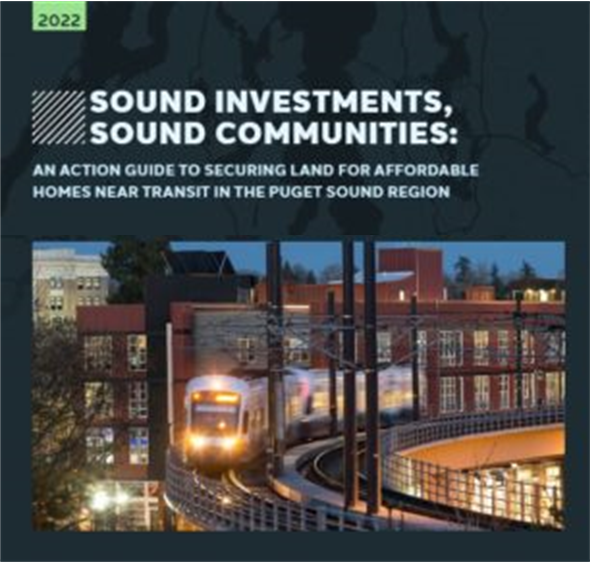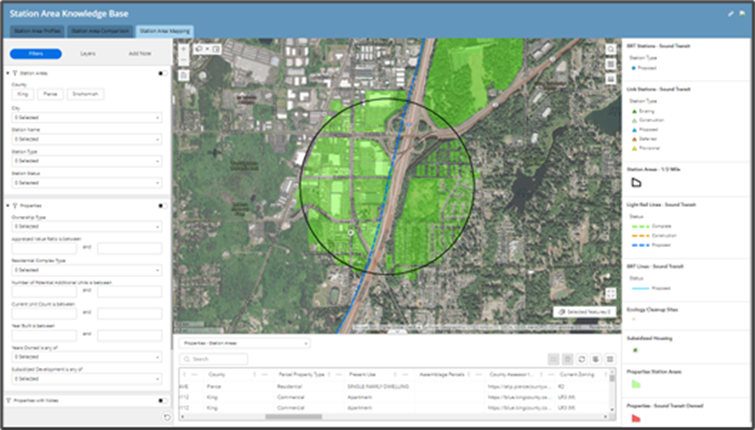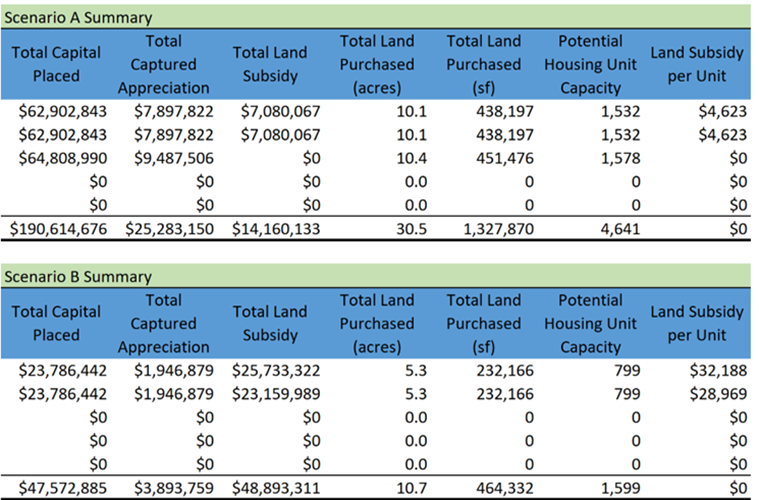With support from the Washington State Department of Commerce, Sound Communities worked with Maul, Foster & Alongi and ECONorthwest to develop three new tools to help jurisdictions take on the challenge of implementing a Housing Benefit District:

The Manual: Sound Investments, Sound Communities is an introductory “how-to” for planners, developers, and advocates interested in using strategic site acquisition and land-banking to foster more affordable housing, equitable development, and complete communities around public transportation. The manual includes chapters covering every step of the process, including planning & design, preventing displacement, implementation, setting frameworks for buying and reselling the land, and how to support affordable homeownership. In addition, the manual provides links to additional local and national resources to help with key questions like placemaking and best practices in transportation & land use.

The Station Area Knowledge Base: An online tool designed by Maul, Foster & Alongi. The Station Area Knowledge Base provides demographic, housing, land, opportunity and displacement risk, and much more in a searchable format for over 100 station areas across Pierce, King and Snohomish County. Drawing from dozens of sources, the tool allows custom searches, filters, and comparisons and is designed to help tell a data driven story, including:
- Allowing users to understand and compare station area characteristics
- Identifying potential affordable housing development and housing preservation sites at the parcel level, and
- Informing planning efforts and communicating the opportunities in station areas for equitable transit-oriented development.
OPEN THE STATION AREA KNOWLEDGE BASE

The Impact Model: Designed by EcoNorthwest, the impact model is a simplified tool to support investigating the financial implications of of land-banking over multiple cycles. Users can set local parameters (e.g., initial capital, average land price, appreciation rate), and then test scenarios for acquiring and selling land over multiple cycles for different mixes of affordable, workforce, and market-rate housing at various levels of discounts to understand potential implications for land acquisition, subsidies per unit, and the total capital placed.
